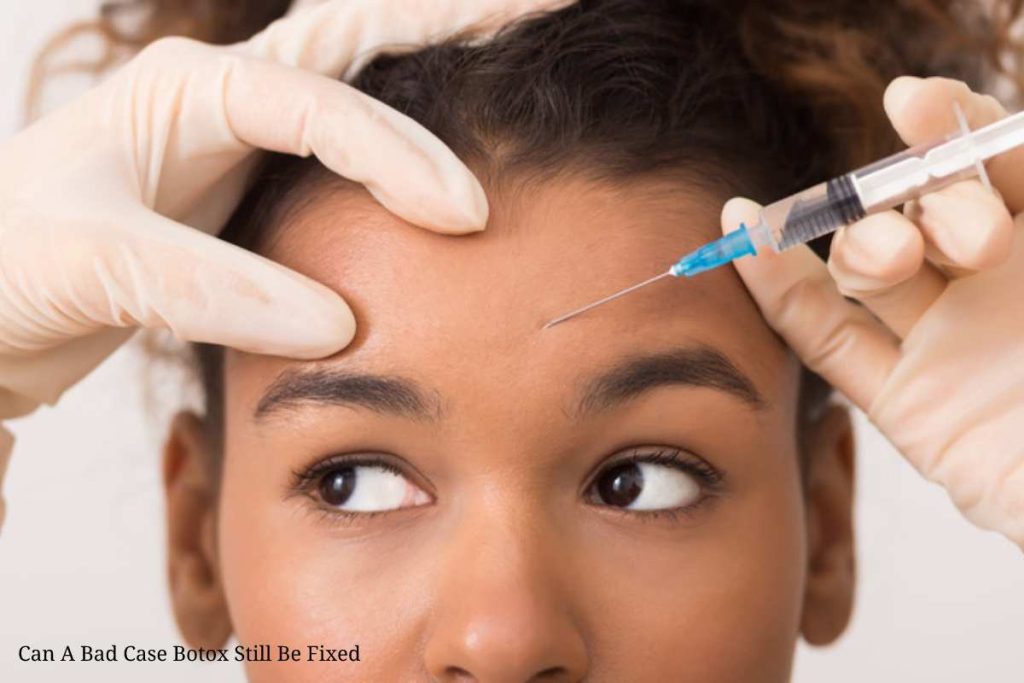We’ve all heard horror stories about botched Botox injection treatments. From frozen foreheads to wonky eyebrows, there’s always the potential for something to go wrong when you get a procedure like this done.
But what if you already got your Botox treatment and something has gone wrong? Can you fix it and make things look as they were before?
This article will help provide answers to that question by exploring different ways bad Botox results can be repaired quickly and painlessly–both doctor-prescribed methods and do-it-yourself remedies.
Table of Contents
What is Botox?
Botox is an injectable muscle relaxant that temporarily paralyzes the muscles around your face, making them look more relaxed and natural. It’s a great way to reduce wrinkles and give you a youthful appearance. Although it can seem intimidating at first to get botox treatments, there are plenty of advantages that make it worth the effort.
First of all, Botox can provide dramatic results with a single treatment. The effects usually last for up to four months, so you don’t have to worry about going in for regular upkeep every few weeks or months like with other cosmetic procedures.
Botox also has little or no recovery time – unlike surgery – which helps make it appealing for people who want quality results without having to take too much time out of their busy schedules. Furthermore, many doctors offer this procedure as an office visit so that you don’t even have to leave home if you choose not to!
Finally, Botox is mostly pain-free because needles are only used in certain areas where desensitization numbs the skin. And finally, results tend to be uniform throughout the entire face – whereas surgery might produce uneven results in some areas – giving you an even complexion and lightening lines, in most cases!
What is Bad Botox?
Bad Botox is a term used to describe Botox treatments that have gone wrong. It is possible to end up with inappropriate results if the “dynamic-facial muscles” that control facial movement are targeted when they shouldn’t be.
Bad Botox is a common issue that many people face when they receive injections of cosmetic treatment. This can be caused by several factors, but generally, it’s due to receiving too much Botox or an incorrect injection pattern. When this happens, a person’s face may appear asymmetrical and frozen, with some areas looking puffy or swollen. In more severe cases, the skin around the eyes can become droopy and uneven. It can also cause difficulty in facial movement and paralysis of certain muscles.
In some cases, bad Botox results from inexperienced practitioners who are not familiar with the proper techniques for injecting the product. For example, if too much toxin is injected into a single area, it can cause complications like droopy eyelids or drooping skin. Another factor is when practitioners do not follow correct techniques for injecting specific muscle groups – this can lead to overworked and swollen muscles that interfere with normal facial expressions. The wrong type of Botox can also lead to undesired effects if used incorrectly or applied in large amounts.
In extreme cases, bad botox can cause partial or even full paralysis of the face. The eyes can become very dry as well since poor injection technique did not properly protect essential nerve endings that control tear production. Finally, it is possible for people to suffer from an allergic reaction due to foreign substances such as preservatives in the preparation solution.
Can Bad Botox be Fixed?
Yes, a bad case of Botox can definitely be fixed. If you’ve had a bad reaction to Botox, the best thing to do is to go back to the doctor who administered it for medical advice and treatment. Depending on how severe your reaction was, the doctor may be able to fully treat it in one visit or require more than one appointment.
In some cases, the effects of bad Botox may wear off over time with no intervention at all. If not, your doctor might recommend treatment options to counteract the botox effects.
Overall, although bad Botox cannot be undone completely, there are options available for improving its effects if you catch them quickly enough. The key is to act fast and always follow your doctor’s instructions for any treatments they have prescribed.
Treating Bad Botox
When it comes to treating bad Botox, timing is of the utmost importance. The longer you wait after the initial injection, the harder it may be to reverse the effects. After a few days or a week, inflammation and swelling can increase further, making it harder for your body to respond to treatments.
There are two main ways of directly treating a bad Botox result: Hyaluronidase injections or dermal filler injections. Hyaluronidase helps break down the hyaluronic acid molecules that makeup Botox, while dermal fillers can be used to plump up areas where too much volume was lost due to bad technique with Botox.
In some cases, the best solution may be indirect treatments such as laser skin resurfacing or topical creams with natural salicylic acid that help reduce inflammation and speed recovery. You may also need additional treatments such as dermal fillers or laser therapy to repair any permanent damage. Of course, dietary and lifestyle changes such as smoking cessation also improve outcomes by increasing blood flow.
No matter what your particular situation is, good skincare practices are always important in achieving optimal results from any type of cosmetic treatment. Before attempting any corrective treatment for a bad Botox injection, make sure you discuss your concerns with a qualified plastic surgeon or aesthetician who can provide personalized advice regarding which solutions will best suit your needs.
